A very strange thing happened on Saturday August 2 1969.
In a country where live football on television was strictly rationed, Scottish fans got a surprise
ITV, in its wisdom, decided to broadcast an English pre-season friendly with a decidedly low-key look to it.
The match was Arsenal against Swindon Town at Highbury, the then-home of the Gunners.
It was a drab affair but what made it notable was the first look for Scots at a teenage prodigy called Charlie George.
One cannot help but feeling that, some 500 miles north in Dundee, this might have also been noticed by a certain Jim McLean.
A man obsessed by football, McLean’s then embryonic coaching career would lead him to become one of Scotland’s greatest-ever football managers.
Charlie George was about to explode on to the English football scene but some 13 years later it was McLean who made an audacious move to bring him to Dundee United in the latter days of his career – and just as the Tannadice club began its historic league-winning campaign.
But it was an episode that ended up as a case of what might have been.
Where it all began…
What made the 1969 TV broadcast so peculiar was that the mandarins in the Scottish Football Association at the time had a very strong aversion to live football, as they reckoned it had a detrimental effect on the gates of their member clubs.
It so happened that the Scottish season did not kick off, with the League Cup, until a week later and this must have been a factor in the game being televised.
So viewers were able to watch Arsenal beat their Second Division opponents 3-0 in front of just over 21,000 spectators.
It was partial revenge for one of the worst results in Arsenal’s history a few months earlier when little Swindon, then in Division 3, beat them 3-1 in the English League Cup Final.
Not yet 19, Charlie George made his mark.
He looked different. He had a swagger about him.
With his long hair he had the aura of a rock star, perhaps a little bit of Mick Jagger.
But it was immediately obvious that he was a major talent in the making.
He was dynamic, fast moving, two footed, technically gifted and equipped with devastating shooting power.
The match commentator, Brian Moore, waxed lyrical about him.
Twenty one months later another bizarre but welcome piece of television programming north of the border allowed Scottish football viewers the chance to see the moment that made Charlie George immortal.
On May 8 1971 Arsenal were playing against Liverpool at Wembley in the FA Cup final.
At the same time, Rangers were playing Celtic in the Scottish Cup final in front of a 120,000 crowd.
It was the usual starvation diet for Scottish fans. Neither game was shown live on television – despite the certainty that there would be an enormous crowd at Hampden.
The Old Firm match ended in a 1-1 draw and went to a replay.
But in England, it was different.
As soon as the final whistle sounded at Hampden, viewers on BBC One in Scotland saw their screens suddenly switch from the northern version of Grandstand to Wembley Stadium where extra-time in the Arsenal versus Liverpool game was taking place!
Even on the black and white screens on which most would be watching, it seemed like a technicolour event.
Wembley was bathed in sunshine, the pitch looked immaculate and the atmosphere was highly charged.
The score was 0-0 but Steve Heighway soon scored for Liverpool, before Scot Eddie Kelly equalised for Arsenal.
Then came Charlie George. Those who watched will never forget it.
He exchanged passes with striker John Radford before lashing an unstoppable shot into the back of the net from just outside the box.
But his celebration was possibly more memorable than the goal, good as it was.
The Arsenal man falling on to his back on the Wembley turf and holding his arms aloft to await the plaudits of his team mates is one of football’s most enduring moments.
The win at Wembley clinched the double for Arsenal who had won the league title five days earlier at the home of their greatest rivals, Tottenham Hotspur.
At the time, winning the double was simply the Holy Grail for English clubs.
Arsenal again reached the FA Cup final the following season. Charlie George crashed a shot against the bar from 12 yards but was unable to stop Leeds United lifting the trophy.
End of an era
In the seasons that followed the great double-winning side was broken up – too soon, in the opinion of many – and George was allowed to leave the club he had supported as a boy.
His relationship with the Arsenal manager Bertie Mee was not good.
In his 2005 autobiography, My Story, George wrote: “My love for all things Arsenal doesn’t include my relationship with Bertie Mee.”
He said his manager “virtually drove me out of the club I chose to play for and still remain loyal to”, something he put down to a clash of personalities.
In 1975 George joined English champions Derby County for £100,000.
They were managed by Scot Dave Mackay, whom the player greatly respected.
His three-year stay at Derby was most notable for a superb hat-trick against Real Madrid in the European Cup.
And although he scored another outstanding goal in the away leg at the Bernabeu, Derby were eliminated.
He later joined Lawrie McMenemy’s Southampton for £315,000 but only played 52 matches, in which he scored 14 goals, between 1979 and 1981 because of injuries.
There was a loan spell with Nottingham Forest and later a short contract with Bulova in Hong Kong.
In late summer 1982, Jim McLean got a tip off that he was available and signed him on a short-term deal.
There was a precedent for such a move.
He had brought in another London legend on a short-term deal two years previously – the former Chelsea and England goalkeeper Peter Bonetti.
The Cat played seven matches for United.
However, in 1982, it was the start of the season when the so called ‘corner shop’ club became Scottish champions.
McLean, who thought that perfection should be the norm, was dissatisfied with the depth of his squad and made it clear he was on the lookout for new players.
It appeared to be as much about creating competition for his existing stars as anything else and the manager also signed the skilful Ally McLeod from Hibs.
I thought it would be great for the club. I was thinking how many goals has he scored for Arsenal? He’ll do well for United.”
John Holt on Charlie George
Of George, McLean said: “This is a top-class player but while we might want to continue our association, the situation is that he is here short-term.”
The idea was that if it was a one-game week, the player would travel north to Dundee for training on the Thursday before the Saturday match.
If there was a midweek game, he would stay in Dundee all week.
George said he knew United through seeing them on television and was fully aware they had internationalists and “many excellent players”.
Asked by reporters if he still, at 31 , had an appetite for the game, he said: “Definitely, I enjoy football and only when I stop enjoying it will I get out.”
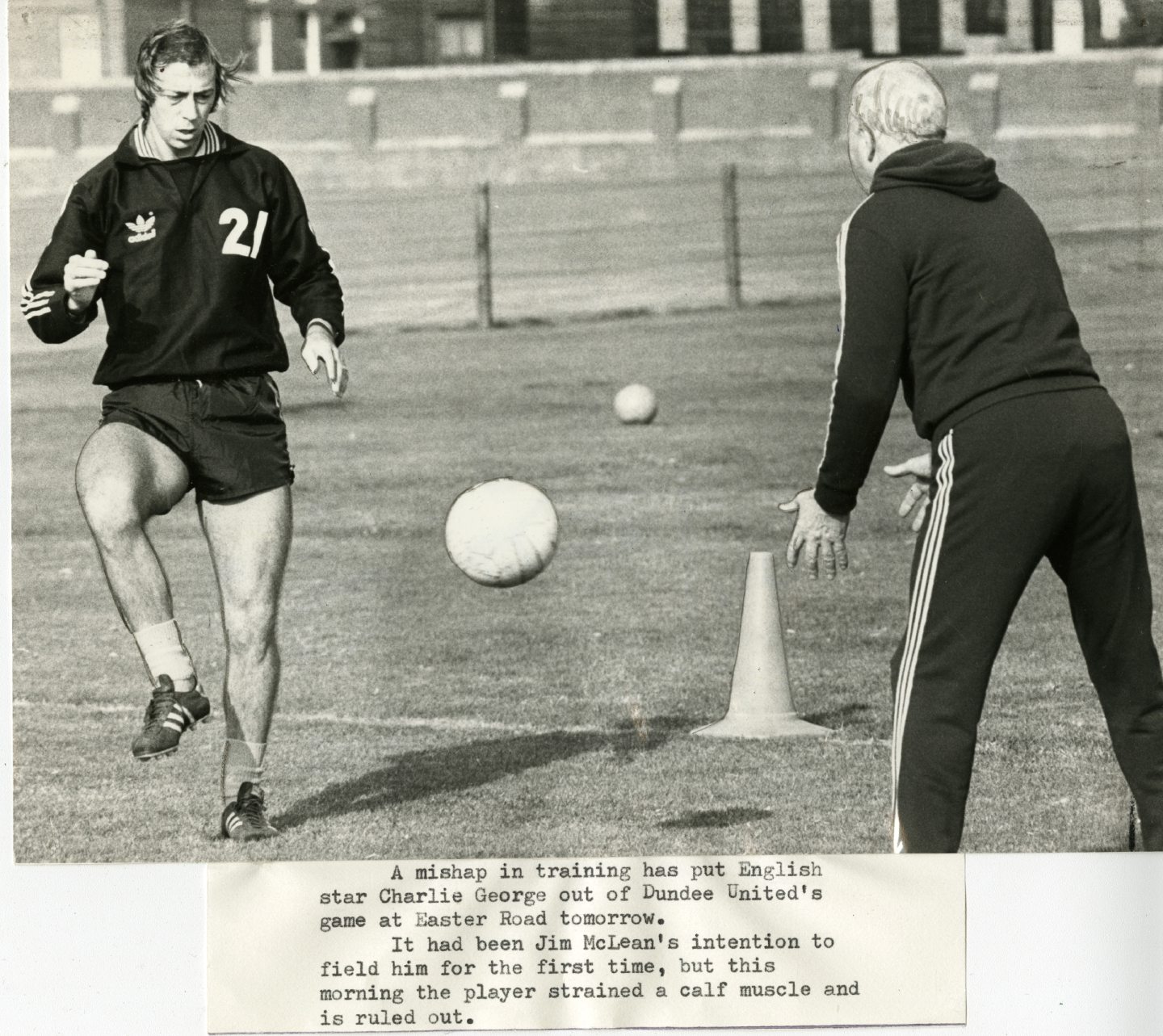
It was thought he would make his debut against Hibs in an away match at Easter Road on September 18 but it was not to be.
He met his team-mates at training – men like McAlpine, Hegarty, Narey, Holt, Milne, Bannon and Sturrock who formed United’s greatest-ever side.
False start
Paul Hegarty remembers it well.
“Wee Jim was obviously trying to strengthen his squad and ensure our strikers were properly on song by bringing somebody else in of his standard,” he said.
But on the eve of the Hibs match George picked up an injury as he tried to prove his fitness.
The Courier’s Don John called it “a cruel stroke of ill luck”.
It happened during his first practice game, specially arranged so McLean could see him in action.
Hegarty added: “You could still see he was quality and class but he got injured early on at training. He told Wee Jim that he’d tweaked his calf. Our training sessions were never low-key. It was always full pelt.
“Maybe that’s why he got the injury because it was like a game situation.”
United defender John Holt was excited by George’s arrival.
“I thought it was awesome,” he recalled.
“I thought it would be great for the club. I was thinking how many goals has he scored for Arsenal? He’ll do well for United.”
Downfield injury
Holt later accompanied George in physio Andy Dixon’s car as they drove for fitness tests to the former Dundee University pitches at Downfield.
Holt had an ankle injury.
“Andy was trying to get me fit and I’d got treatment on the Monday and the Tuesday.
“Charlie was trying to get fit as well. He went for a run round the pitch and he went about three quarters of the way round and his calf just went again.
“Andy helped him back to the car and went back to Tannadice. Charlie was really, really disappointed.”
Over the next few weeks it appears that George was a nearly man.
He was ruled out of a September League Cup away clash against Aberdeen and then a league game against St Mirren.
But McLean told reporters that even if George was added to the United pool, he would not be satisfied.
“We have a good pool,” he said.
“But it can still be improved.”
As journalists previewed United’s return League Cup match on October 6, there was no better news about the former Arsenal star.
The Courier reported: “If all had gone as planned, Charlie George and Ally McLeod could both have been playing for Dundee United against Aberdeen at Tannadice Park tonight in the second leg of the League Cup quarter finals.
“As it is, both are side-lined with injuries.”
There was hope that George would be available for a Kilmarnock league game on the following Saturday but this was to no avail.
Into November and United had already played 31 games including eliminating PSV Eindhoven and Viking Stavanger from the Uefa Cup.
McLean was looking to give striker Davie Dodds a rest because he felt he had been overplayed but George and McLeod were both injured.
What might have been?
Just before Christmas, the Evening Telegraph reported that George was still working his way back to fitness by running round a football pitch in Hampshire.
He never returned to Tannadice.
George was now 32 and his short-term deal with United was finished.
He would eventually sign for Coventry but never played a game and retired.
For Paul Hegarty it was just one of these things.
“Charlie was a very, very good player,” he said.
“Wee Jim was always wanting to improve his team and the standard of players and put pressure on his strikers, midfielders and defenders.
“He was always looking for bigger and better players.”
Did the manager say much about George being unable to play?
“No, he didn’t. I think he was probably disappointed, bringing a high-profile player to the club which obviously didn’t work out.”
For the Tannadice club, it remains one of the great ‘what if’ scenarios.
United, of course, went on to create history that season by winning the league.
What might have happened had Charlie George been able to play?
You never know, they might have won the double!
More like this:
Jim McLean packed his bags 50 years ago to make history with Dundee United
Maurice Malpas: How Dundee United great started career by earning £10 steak voucher
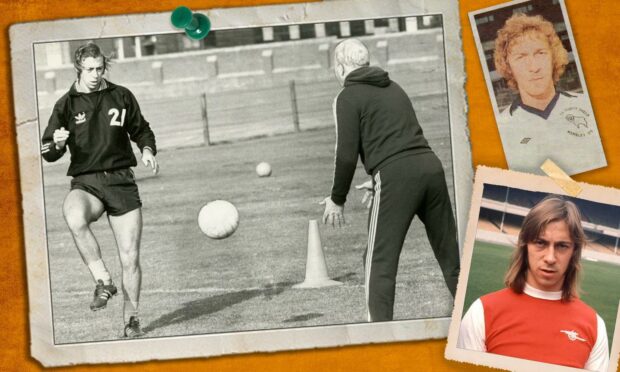
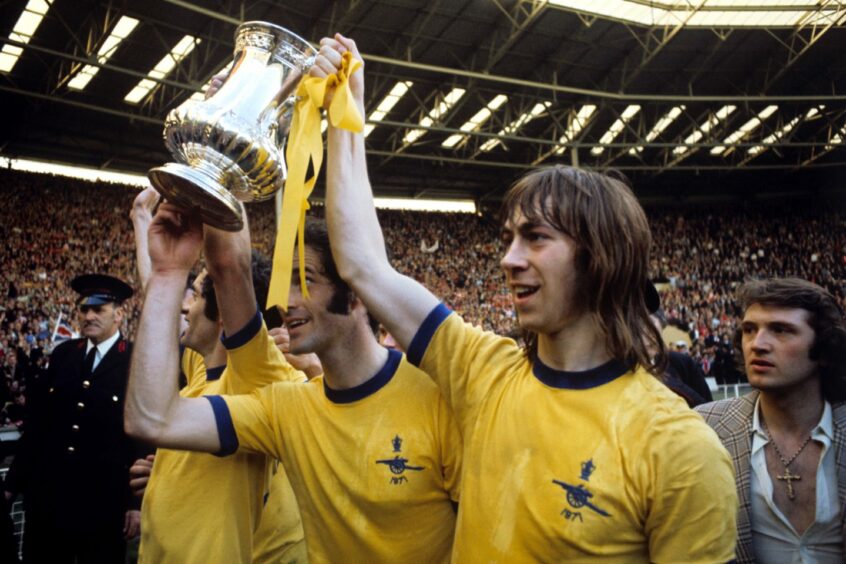
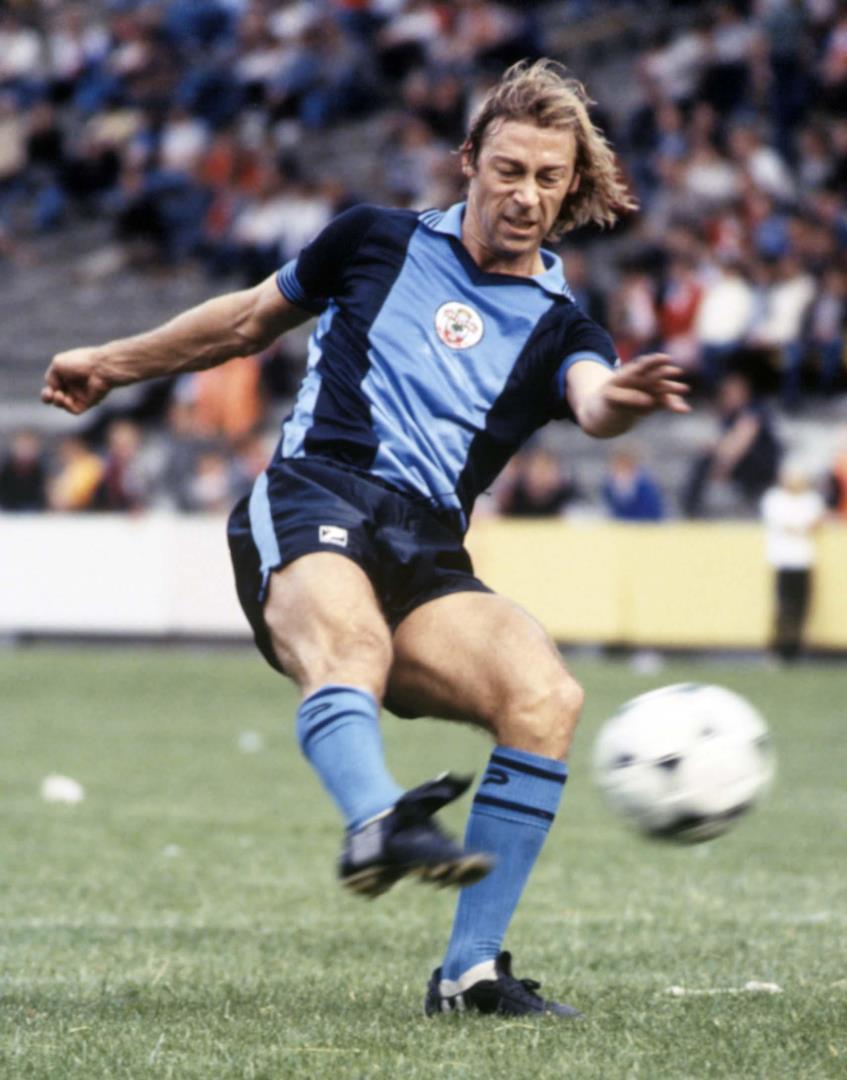
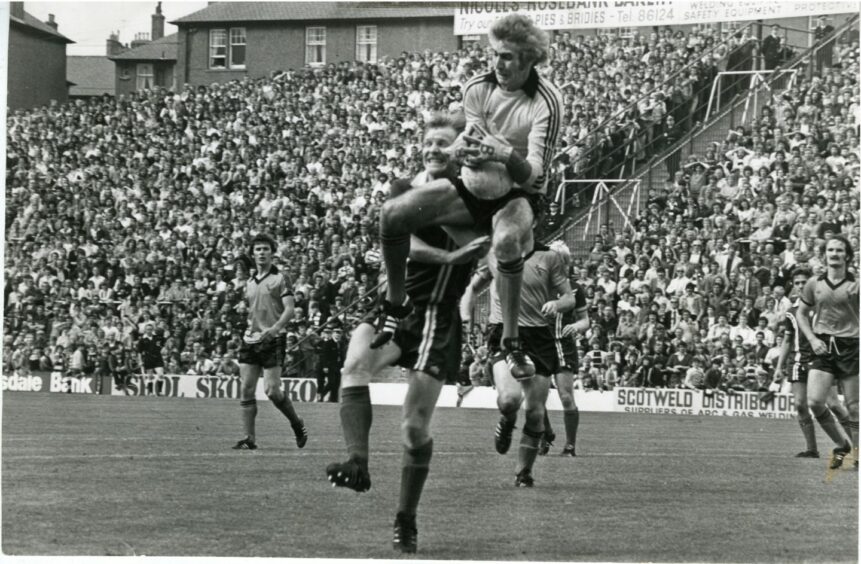
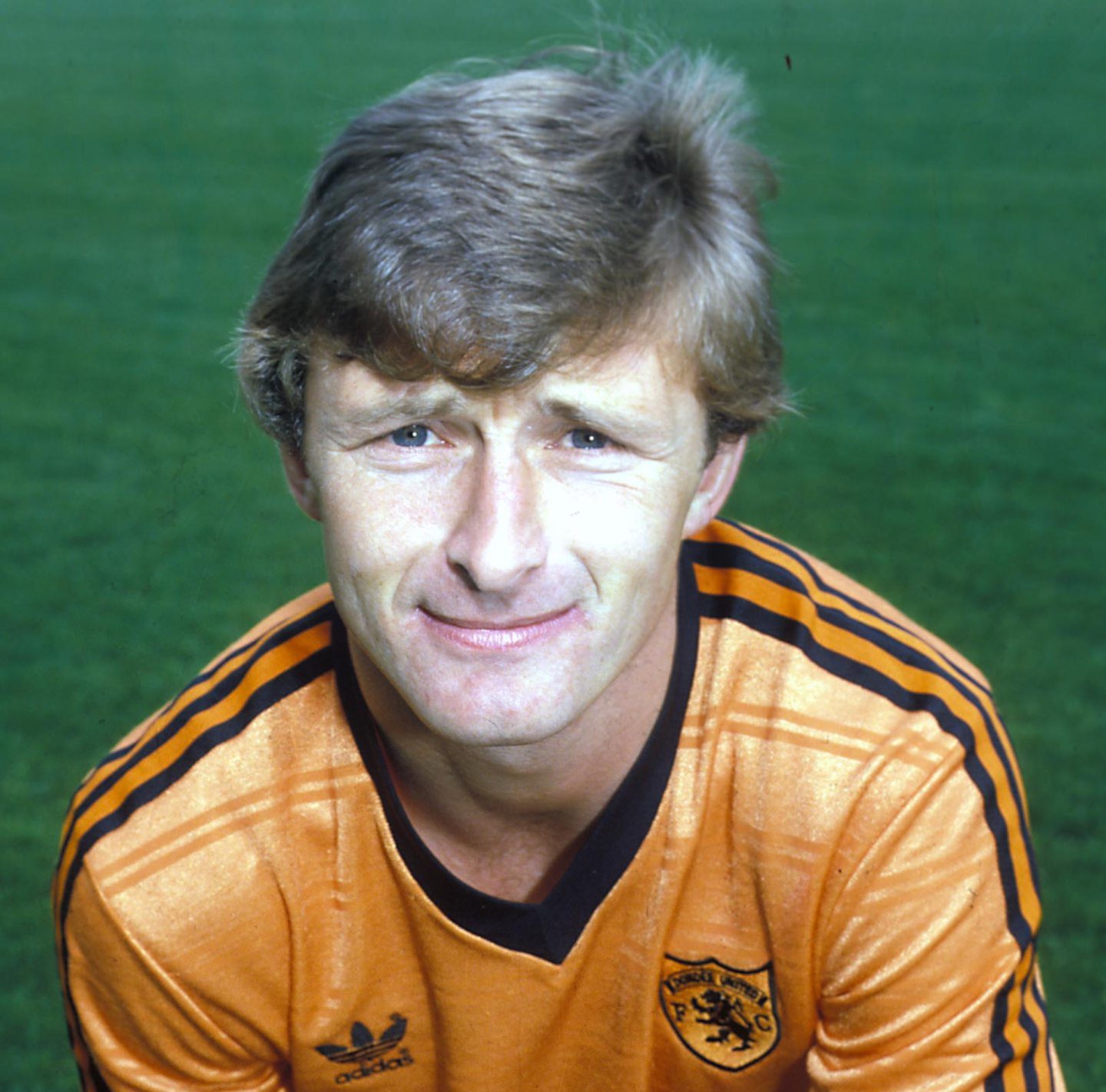
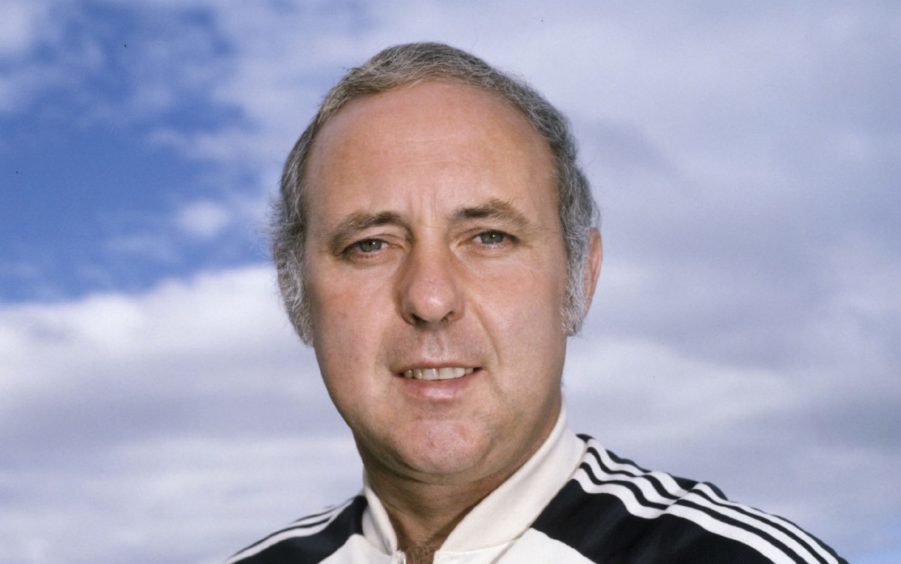
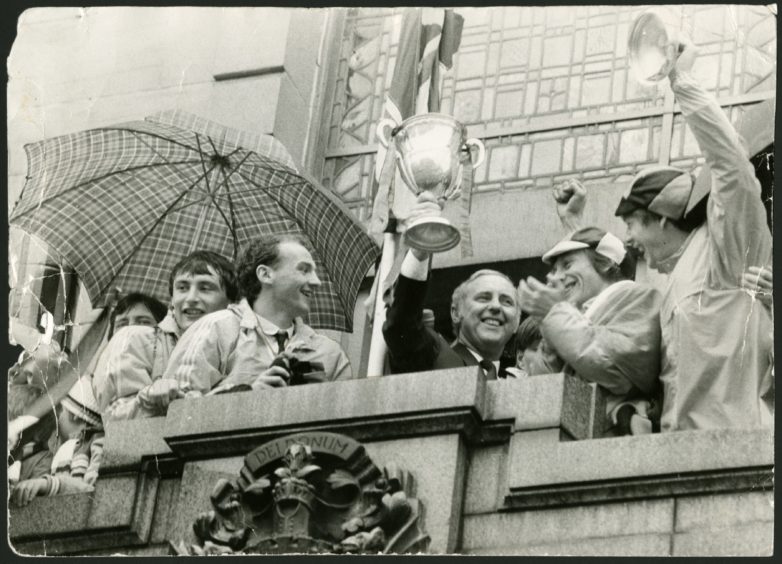










Conversation